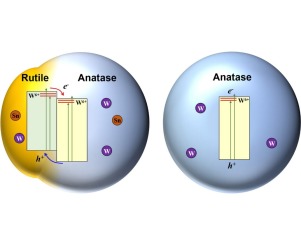Synergetic control of band gap and structureal transformation for optimizing TiO2 photocatalysts
슈퍼관리자
2021-05-21
Synergetic control of band gap and structureal transformation for optimizing TiO2 photocatalysts
-
Authors :
Heechae Choi, Sovann Khan, Junghyun Choi, Duong T.T. Dinh, Seung Yong Lee, Ungyu Paik, So-Hye Cho, Seungchul Kim
-
Journal :
Applied Catalysis B: Environmental
-
Vol :
210
-
Page :
513-521
-
Year :
2017

Abstract
Impurity doping and synthesizing polymorphic particles are the common strategies to improve activity of TiO2 photocatalyst by lowering the band gap and enhancing electron-hole separation rate. However, these two approaches have side effects. Doping of impurities make space charge region (SCR) thinner near the surface, which requires smaller sized particles than undoped TiO2 for the optimal performance. Polymorphic TiO2 particles, in which rutile and anatase phases coexist in a particle, are usually large due to energetic unstability of the rutile phase in a fine particle. For this contradiction that one needs small size while the other needs large size, two effects are not easy to be combined. In this study, we suggest a dual-doping strategy to solve the contradictory problem of SCR reduction by donor doping and inevitable size growth in polymorphic particles. We successfully dope W, a band gap narrower, into fine size of polymorphic particles by Sn-codoping, a promoter of the anatase-to-rutile transformation (ART), and demonstrate greatly improved photocatalytic activity. The accelerated ART by Sn-doping could keep the size of polymorph junctioned TiO2 small (∼10 nm) as lower temperature annealing become able to induce the ART. The concept of dual doping with a band gap narrower and an ART promoter provides a way to synthesize highly active photocatalysts by overcoming the drawback from shortened SCR length.















